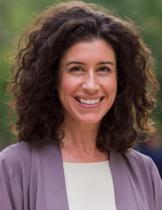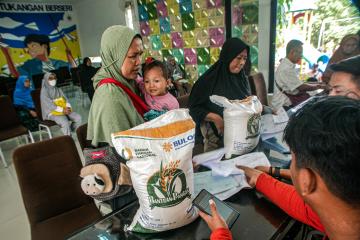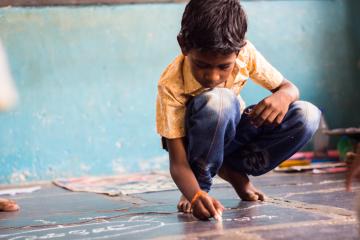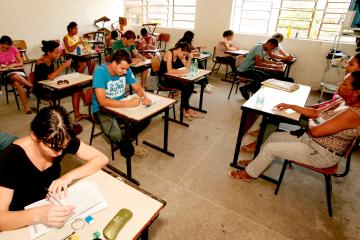
The Evidence Effect: The unique value of aid and philanthropy—four essential roles
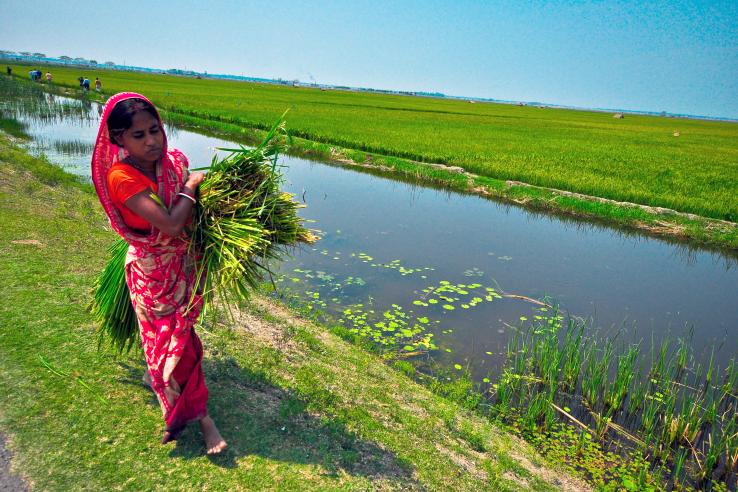
Amid climate shocks, conflict, inequality, and fiscal strain, development aid is under scrutiny like never before. Many are asking who will step in to bridge the growing gap in aid. But the best case for foreign assistance is not that aid should do more—it’s that it should do what others can’t.
Governments and local communities are leading the charge on delivering services at scale. When focused on the right things, donor capital—both bilateral and philanthropic—doesn’t have to and generally shouldn’t replace government funding. It should play a catalytic role to spark innovation, spread learning, scale game-changing solutions, and strengthen responsible governments.
We (Alison and Shobhini) have had the privilege of working with many governments, NGOs, social enterprises, and the donors that fund them. Based on this experience, we’re sharing four big ideas for how donors can make investments that catalyze meaningful change.
1. Fund innovations that others can’t.
Foreign assistance and philanthropic funding can act as the risk capital of development innovation—supporting early-stage ideas that governments or the private sector in low- and middle-income countries may be unable or unwilling to fund at early phases. While not all aid is flexible, when donors make room for experimentation and learning, even with the risk of failure, they help uncover solutions that wouldn’t otherwise be found. Without support to surface new ideas, we risk circling back to the same old approaches—while more promising ones never get the chance to prove themselves, let alone reach scale.
In South Asia and sub-Saharan Africa, for example, increasing farm productivity is key for growth and development, especially for small-scale farmers facing extreme weather that can wipe out an entire season’s worth of crops. Foreign assistance and philanthropic donors supported the development of a flood-tolerant rice variety that boosted yields—but seeds only help if farmers know about them and know how to use them. The UK’s Foreign, Commonwealth and Development Office (FCDO) and the Gates Foundation supported evaluations that tested different ways to increase adoption by farmers. These donor investments, from seed development to adoption strategies, turned a lab invention into a real solution for over 35 million farmers.
Pivoting to health, increasing immunization coverage is an extremely cost-effective way to reduce preventable illness and death. We know vaccines work, but making sure people get the vaccines they’re eligible for is the challenge in many countries. The global vaccine alliance, Gavi, recently funded multiple evidence-informed projects to increase the demand for immunizations. J-PAL is working closely with Gavi and their partners on projects to pilot and scale programs in Nigeria, Cameroon, Democratic Republic of Congo, and Lesotho. This innovative approach backed by donors creates the space necessary to test new delivery models and scale up the successful ones.
In education, Teaching at the Right Level (TaRL) has led to some of the largest learning gains among rigorously evaluated programs worldwide. Developed by the NGO Pratham and government partners, in an iterative process of innovation and evaluation in collaboration with J-PAL, it was refined through repeated testing, retooling, and learning and adaptation through implementation. Several donors joined this journey with trust, provided essential capital, and kept the focus on a shared mission of helping every child master basic skills. TaRL has now reached over 70 million children in India and Africa, improving teacher quality, boosting student learning, and making social spending on education more effective.
2. Invest in learning and public goods for all.
Another unique and catalytic role for donors is in taking a long view by investing in generating knowledge and making it widely available. This can work in a few different ways.
First, donors can invest in portfolios of research to uncover effective approaches to tackle complex development issues. To take a finance analogy, a portfolio approach increases the chances of finding standout solutions while generating broader lessons from many studies across different programs that help advance our understanding of what works, what doesn’t, and why. The UK’s FCDO has long championed this approach, funding portfolios like J-PAL’s Agricultural Technology Adoption Initiative and Governance Initiative, among others, that have led to meaningful policy impact.
Second, to generate evidence and make it widely available, donors can shore up knowledge infrastructure, like cost data, research registries, and in-country programs that strengthen research ecosystems. Cost data is essential to comparing the cost-effectiveness of different programs and giving decision-makers the information they need. Research transparency via registries ensures we can weigh any study’s findings against similar research. And building strong research ecosystems enables high-quality research that is shaped by local perspectives.
Third, donors who work on a global or regional level can make lessons widely available and diffuse good ideas. Sharing lessons widely is a key step in turning evidence into action. For instance, J-PAL MENA and UNICEF worked together to share global evidence for Egypt’s policy priorities, and J-PAL South Asia partnered with FCDO to distill evidence-based policy recommendations for India’s federal Ministry of Finance.
3. Bridge the gap from idea to scale.
If we want more bold ideas to reach millions, we must fund the path that gets them there. Many bold ideas reach impact at scale when governments get involved. Their reach and mandate are unmatched—but the journey from pilot to public program is rarely simple. Whether innovations originate inside government or from NGOs or social enterprises, donor funding can play a unique and catalytic role in helping adapt, test, and integrate them into government systems.
One powerful example of donor support enabling government-led scaling is the Graduation approach in India. First pioneered by BRAC, the Graduation approach to tackle extreme poverty was adapted by the Bihar government in partnership with J-PAL South Asia and the NGO Bandhan, reaching thousands of vulnerable families. Donor support made it possible to tailor the program to state systems, build learning loops, provide continuous monitoring to ensure the program was implemented correctly, and troubleshoot implementation challenges. Now the program is set to scale nationwide through India’s Ministry of Rural Development, with ongoing support from ASPIRE at J-PAL South Asia and a large group of partners.
In other contexts, funding partners similarly made major scaling decisions possible. In Indonesia, donor funding was key to rapid evaluation and scaling of improvements to the flagship national rice subsidy program, providing food security for millions. And in Brazil, philanthropy-funded evaluation enabled the broader adoption of an AI writing assistance program for use in public high schools, improving student learning and test scores. In these cases and many more, timely donor investment helped bridge the gap between promising ideas and large-scale, government-led initiatives.
4. Embed in government systems, instead of replacing them.
The most transformative partnerships are co-created with governments. As our colleagues wrote about a few weeks ago, labs or evidence experts embedded in government institutions can serve as centers of innovation that enable continuous experimentation and learning from within the system itself, aligned with national priorities and able to adapt to changes in personnel or administrations.
Embedded models prioritize local leadership, policy alignment, and long-term presence. When donors invest in people, institutions, and trusted relationships—as we’ve seen in J-PAL’s embedded labs from India to Egypt, Morocco, South Africa, Spain, and beyond—they help build up governments’ own capabilities to find innovative solutions, deliver, and scale what works.
Foreign assistance and philanthropy are uniquely positioned to support this kind of relatively low-cost, high-impact collaboration. While it’s still important to fund individual programs and support high-quality grassroots organizations, that’s not a substitute for engaging with government systems—especially when aiming for systems change. Working in close partnership in embedded setups takes patience, flexibility, and a tolerance for ambiguity, but the opportunity to influence program design and spending with evidence is worth it.
Our partnership with the Tamil Nadu government in India, now in its tenth year, is a great example of institutionalizing a culture of evidence use through long-term partnerships that sustain political and bureaucratic changes. And SARWA, our Air and Water Lab in India, was launched in 2024 to embed teams within state governments to accelerate evidence-informed solutions to clean air and water.
The call to action is simple and urgent: fund innovation, fund the infrastructure that makes learning possible and locally-driven, fund the bridge from effective idea to scale, and fund the teams working alongside governments to make it happen. Aid can’t and shouldn’t replace what governments do—but it can help them do it more effectively.
